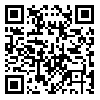
International Journal of Industrial Engineering & Production Research
Iran University of Science & Technology
Sat, Apr 26, 2025
[Archive]
Volume 35, Issue 3 (IJIEPR 2024)
IJIEPR 2024, 35(3): 63-79 |
Back to browse issues page
Download citation:
BibTeX | RIS | EndNote | Medlars | ProCite | Reference Manager | RefWorks
Send citation to:



BibTeX | RIS | EndNote | Medlars | ProCite | Reference Manager | RefWorks
Send citation to:
Hasheminasab Z, Mazroui Nasrabadi E, Sadeqi-Arani Z. Challenges and Drivers of the Internet of Things in the Supply Chain: A Systematic Review. IJIEPR 2024; 35 (3) :63-79
URL: http://ijiepr.iust.ac.ir/article-1-2046-en.html
URL: http://ijiepr.iust.ac.ir/article-1-2046-en.html
1- Master Graduate, Department of Business Administration, Faculty of Financial Science, Management and Entrepreneurship, University of Kashan, Kashan, Iran.
2- Assistant Professor, Department of Business Administration, Faculty of Financial Science, Management and Entrepreneurship, University of Kashan, Kashan, Iran. ,drmazroui@kashanu.ac.ir
3- Assistant Professor, Department of Business Administration, Faculty of Financial Science, Management and Entrepreneurship, University of Kashan, Kashan, Iran.
2- Assistant Professor, Department of Business Administration, Faculty of Financial Science, Management and Entrepreneurship, University of Kashan, Kashan, Iran. ,
3- Assistant Professor, Department of Business Administration, Faculty of Financial Science, Management and Entrepreneurship, University of Kashan, Kashan, Iran.
Abstract: (1818 Views)
In today’s world, supply chains must adopt new and intelligent technologies to achieve objectives such as enhancing productivity and performance, competitiveness, and overcoming challenges. The Internet of Things (IoT), as an emerging and transformative technology, is considered one of the most significant technology areas today and has garnered considerable attention across various industries. However, the implementation of IoT at the supply chain (SC) level faces numerous challenges and obstacles, and its acceptance at this level requires specific drivers. To date, no specific classification has been provided for drivers at the SC level, and existing classifications for challenges also need to be reviewed and updated. Given the importance of IoT in SC management, a systematic review at this level is necessary. This article provides a systematic literature review to identify and classify the challenges and drivers of IoT at the SC level. The study reviewed articles published from 2004 to 2023, ultimately identifying and categorizing 92 challenges into 16 categories: financial, standards and government regulations, privacy and security, energy consumption, health issues, hardware and software issues, culture in the SC, lack of knowledge and awareness, poor IT management, coordination in the SC, perception, the Challenge of uncertainty, lack of Plan and Strategy, incompatibility with existing technology, supply Problems, and user acceptance and trust in technology. Additionally, the study identified 4 antecedent drivers (pressures, understanding the benefits, government regulations, government incentives) and 10 consequent drivers (production benefits, improving competitive advantage, inventory management, cost management, improving transparency, efficiency of information flow, development of responsiveness and agility, sustainable development, facilitation of management, and development of cooperation and coordination). Finally, a model for implementing IoT technology in the SC is presented. This model synthesizes the findings from the literature review and offers a practical roadmap for organizations seeking to leverage IoT in their supply chains. By addressing the identified challenges and utilizing the drivers, organizations can effectively integrate IoT technology, thereby enhancing the efficiency, transparency, and overall performance of their SC operations.
Type of Study: Review |
Subject:
Logistic & Apply Chain
Received: 2024/06/6 | Accepted: 2024/07/3 | Published: 2024/09/18
Received: 2024/06/6 | Accepted: 2024/07/3 | Published: 2024/09/18
Send email to the article author
| Rights and permissions | |
 | This work is licensed under a Creative Commons Attribution-NonCommercial 4.0 International License. |




